talkingfashion » fashion and fur
-
The Chinese Fashion Round Up
The Chinese Fashion Round Up
By Paige McKirahan
Nǐ hǎo, TalkingFashion readers! To continue our trip around the globe this month, we are making our way to China just in time for Chinese New Year! The holiday, which occurs on Tuesday, February 5th, marks the turn of the traditional Chinese calendar and celebrates the change from the Year of the Dog to the Year of the Pig. Like many of its other fashionable counterparts, China boasts bustling streets full of style fit for the pages of Vogue; being fully immersed in the Influencer era, Chinese fashion moguls are capitalizing on their country’s blogging frenzy and creating digital empires across their diverse channel of thriving social media platforms. Read on to learn more about which of these bloggers are a must follow this season!

This business woman comes from not-so-humble beginnings when she began her career as a blogger after receiving her MBA in marketing a prestigious Parisian university. Her love and knowledge of luxury brands gives her a creative, insightful edge, allowing her to integrate herself into the industry seamlessly.
Margaret Zhang
This influencer is known best for not only wearing luxury brands, but being the creative mind behind them. Iconic labels like Louis Vuitton, Dior, and Chanel are just some of her high-profile collaborators and she is represented by IMG, solidifying her position in the industry tenfold.
Jiaye Wu
Jiaye Wu’s time in the fashion industry has been nothing less than emblematic. From being the first Chinese model to market Calvin Klein to representing Hermes, Yohji Yamamoto, and Balmain, she has surely found her claim to fame. She strives to maintain a presence in both the high fashion and down to earth blogger worlds and does it well due to the adoration of her thousands of plans.
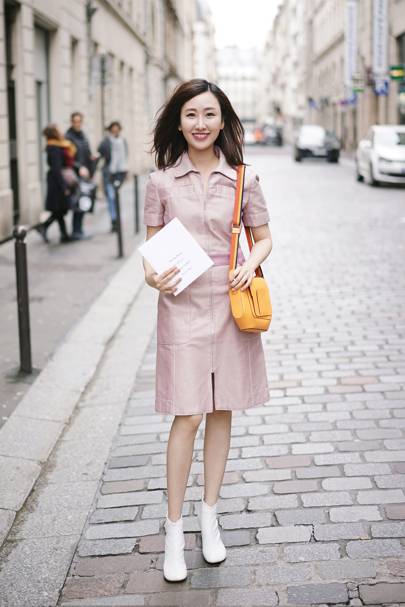
This influencer and ambassador is an expert in digital marketing; after selling 100 Mini Coopers on her WeChat last year, she topped that feat with a collaboration with Rebecca Minkoff, selling out 1,200 bags in only two days. She then launched her own fashion brand and generated over 1 million in revenue in the label's two debut drops.
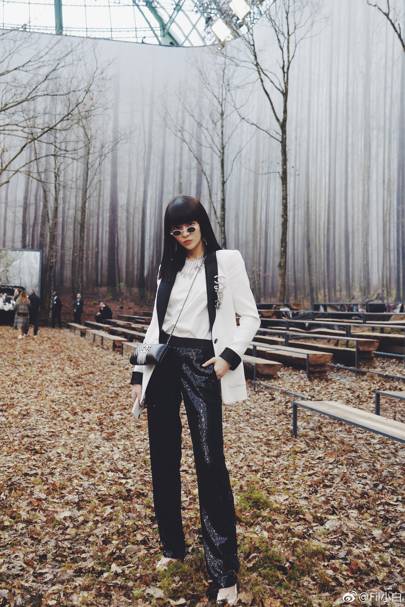
This street style aficionado is making her emblematic mark on the Chinese fashion industry; after being the only female influencer to walk in Dolce & Gabbana’s A/W' 2017 show, she undoubtedly knows how to work the spotlight on and off the job. As a stylist to other high profile influences and celebrities, she has great knowledge of fashion practices and it shines through in her social media.
In addition to all of the innovative influencers on social media promoting their personal brands, there are a plethora of designers creating the pieces these bloggers are obsessing over. Read on to see five Chinese designers to watch in one of the fastest growing buyers’ markets in the world.

This Shanghai-raised designer made their claim to fame from her talent gained in London’s Central Saint Martin’s design school. Their versatile pieces include vibrant color palettes and unusual fabric combinations that can work well on everyone from the average person to the runways highest paid models.

Yang also came into his own in the same London design school; the skills he gained from his time there made him an industry “genius”, pushing him to launch his own label in 2015. His collections demonstrate his dedication to fashion, film, and fine art, showing his culture roots effortlessly in his designs.

Yushan Li and Jun Zhou are the dynamic duos behind one of Milan’s most dazzling brands. Both have had enigmatic careers, working from high profile brands like Yeezy to taking their genderless label to global runways.

As streetwear designers are quickly gaining traction in the high fashion world, Feng Chen Wang’s futuristic approach to outwear captures the attention of every Instagram blogger on your timeline. Her pieces drip with cool and her larger-than-life silhouettes boast reflective fabrics and prep school aesthetics fit for every fashionista.

Founded by Xialu Liu, this feminine label’s inspiration ranges from English chic to fine art pleats. She loves artistic motifs found in sculpture and in Kenyan Maasai culture, keeping followers on their toes when deciding who to collaborate with next!
If last week's Australian designers and influencers provided you with some inspiration for your spring follow lists, this week's designers are sure to pique your interest with their eclectic creations and practices. Check out their collections at the links above and check out what Chinese inspired designs we have right here in our shops!
Sources:
7 Chinese International Influencers You Need to Follow. (2018, August 22). Retrieved from https://jingdaily.com/7-chinese-international-influencers/9 Chinese Fashion Labels to Watch in 2019. (2019, January 04). Retrieved from https://radiichina.com/9-chinese-fashion-labels-to-watch-in-2019/Yang, Q. (2018, August 31). Meet The Chinese Influencers Making Waves In The Fashion World. Retrieved from https://www.vogue.co.uk/article/chinese-influencers-to-know-now -
Designer Spotlight: Christian Dior
Designer Spotlight: Christian Dior
By Paige McKirahan
As a household name in both the fashion world and among creatives alike, Christian Dior was the obvious choice for our designer spotlight this week. This French couturier was born on the coast of Normandy in 1905 as one of five children born to a wealthy fertilizer manufacturer. He moved to Paris at the age of 5 and used his artistic inclinations to sell his sketches on the streets for small change. Though his parents hoped that he would become a renowned diplomat, he was adamant about pursuing his art, prompting his father purchased a small art gallery for him to take over after he completed school. The gallery held a variety of artistic works by artists like Pablo Picasso and tiny but mighty gallery saw small success. Despite this, Christian was forced to close its doors in the wake of the Great Depression in 1929, the deaths of his mother and brother, and the demise of his father’s business.

Christian Dior Art Gallery (source)
Following this event, Christian began working with fashion designer Robert Piguet and did so for around 10 years until he was chosen for military service in 1940. He served for two years and then went to work with couturier Lucien LeLong who dressed the wives of Nazi officers and French collaborators in order to preserve the industry’s economic and artistic prosperity. During this time, Christian was the primary designer at LeLong’s fashion house and worked alongside Pierre Balmain which, as you may have guessed, is the founder of the Balmain fashion house created in 1946.
After working with and under some of the industry’s most prevalent names, Christian decided he was going to found his own fashion house; in December 1946, he founded the house of Dior in Paris and was backed by Marcel Boussac, a cotton-fabric Magnate. Many say that the house was not truly open until 1947, which is when Christian debuted his first collection.

New Look design from first Dior Collection (source)
This first collection, containing 90 different looks, was considered the pinnacle of the “New Look” as defined by US Harper's Bazaar magazine editor Carmel Snow. His designs were not aligned with the wartime fabric restrictions and featured calf length, full skirts, cinched waists, and fuller busts. The look garnered some criticism on account of its overall opulence, but it was this lavishness that allowed Paris to re-establish itself as a head player in the fashion world.
His was an immediate success and was overwhelmed with orders from world-famous icons like Rita Hayworth and Margot Fonteyn. The British Royal family even invited Christian to have a private showing of his collection despite the fact that King George V barred young princesses Elizabeth and Margaret from wearing his controversial New Look pieces. After he became an established name in the industry, he established his ready-to-wear house on New York’ 5th Avenue in 1948 as the first of its kind. His debut perfume line launched in 1948 as well with Miss Dior being his first fragrance, which was named after his sister.
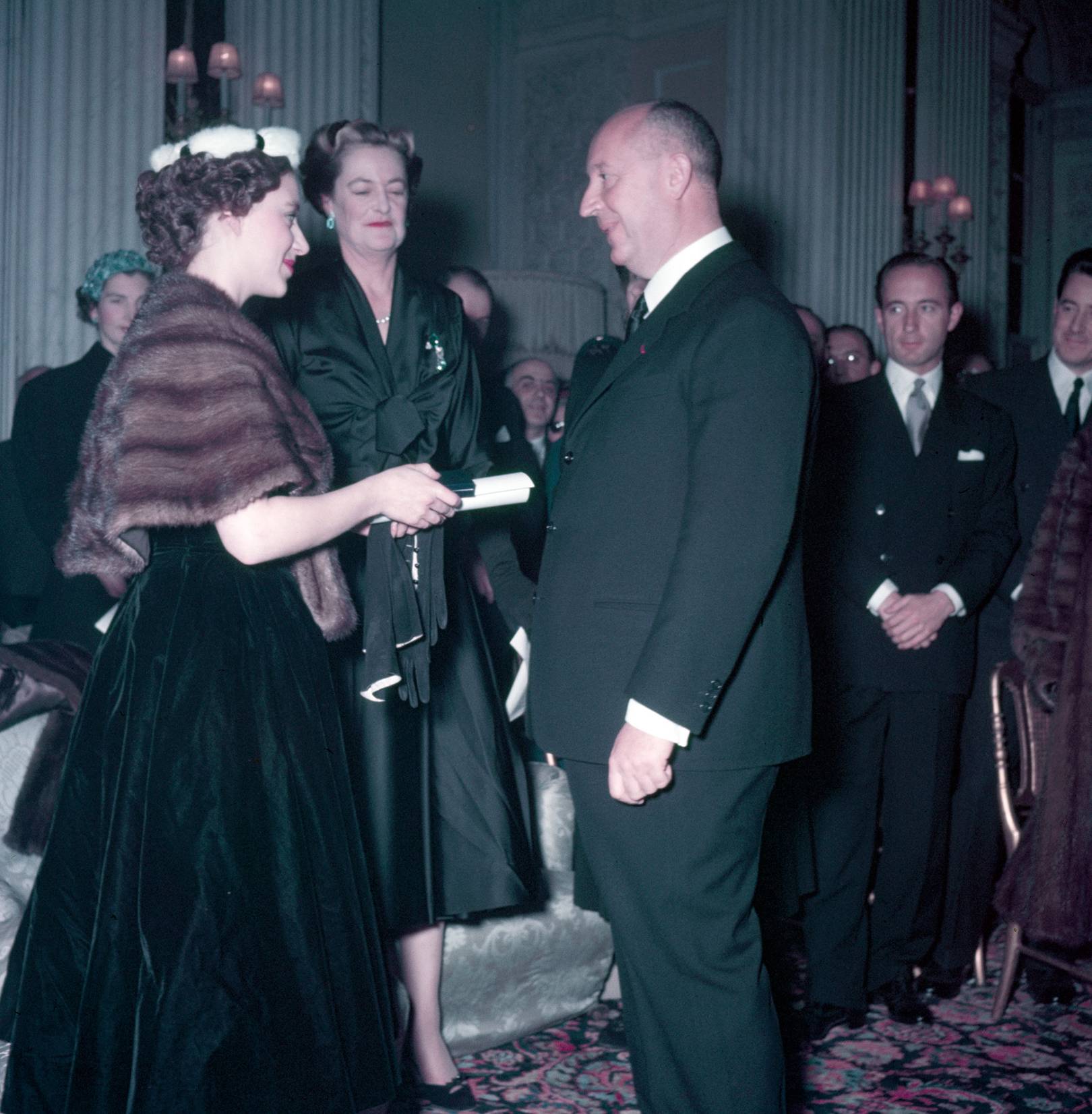
Christian meeting Princess Margaret (source)
Not to be outdone by any of his counterparts, Dior was the first haute couture brand to license the production of its designs beginning in 1949. Christian realized that his New Look pieces worked hand in hand with one another and he along with his business partner Jacques Rouet saw the importance in licensing his name to an array of luxury accessories including furs, hats, stockings, and ties. This decision was met with great criticism as it was said to “cheapened the haute couture industry”. Regardless, his massive success with the endeavor inspired nearly all other couturiers to follow the same model.
In 1955, Dior hired 19-year-old Yves Saint Laurent as his design assistant and almost immediately knew that Laurent would be the one to succeed him at Dior. He told Laurent’s mother this at the age of 52 and she was quite confused about the remark until he suffered from a fatal heart attack in October of 1957 shortly after his meeting with her. His funeral saw over 2,000 attendees that included his staff and multitude of famous clients with the Duchess of Windsor at their head.
In the wake of Christian's death, Rouet appointed 21-year-old Laurent as the house’s artistic director in an effort to counteract the disarray caused by the event. He held the position until he was drafted and was succeed by Marc Bohan who defined a new era and silhouette for Dior that is known as the Slim Look. This modernized, sleek version of Christian’s iconic look proved to be a hit in the industry and he was an artistic director until 1989. Gianfranco Ferre followed him and then was replaced by John Galliano in 1997 as he was said to have a creative talent that aligned perfectly with Christian’s. Ferre and Galliano transformed the designs and Dior’s ready-to-wear lines shot up in popularity. Galliano’s name was plastered on headlines everywhere when fashion and philanthropic icon Princess Diana wore his first couture dress for the brand.

St. Laurent design for Dior, 1955 (source)
Galliano also was a pioneer in using branded logo motifs and he used that design to create his now iconic saddlebags that were in the hands of every it girl of the era. His brilliant work dazzles but also brought controversy, and he was eventually removed from his position after making anti-Semitic statements on film after a wild night out. Raf Simons then was appointed to the role of artistic director and was a great success from 2012 to 2016. After his departure, the decision surrounding who would succeed him was difficult but game-changing; Maria Grazia Chiuri, the former Valentino co-creative director, took over operations at Dior as the first female to hold the position. Her unapologetic approach empowers women and ensures the brands' success for years to come! We may not have any Dior in store, but we do have a great Saint Laurent piece sure to sate your designer appetite!
Sources:
Bannerman, S. L. (2018, July 19). The History of the House of Dior. Retrieved from https://theculturetrip.com/europe/france/articles/the-history-of-the-house-of-dior/
Sowray, B. (2017, August 23). Christian Dior. Retrieved from https://www.vogue.co.uk/article/christian-dior
-
Annie Leibovitz: A Favorite Fashion Photography Icon
Annie Leibovitz: Our Favorite Fashion Photography Icon
By Paige Mckirahan
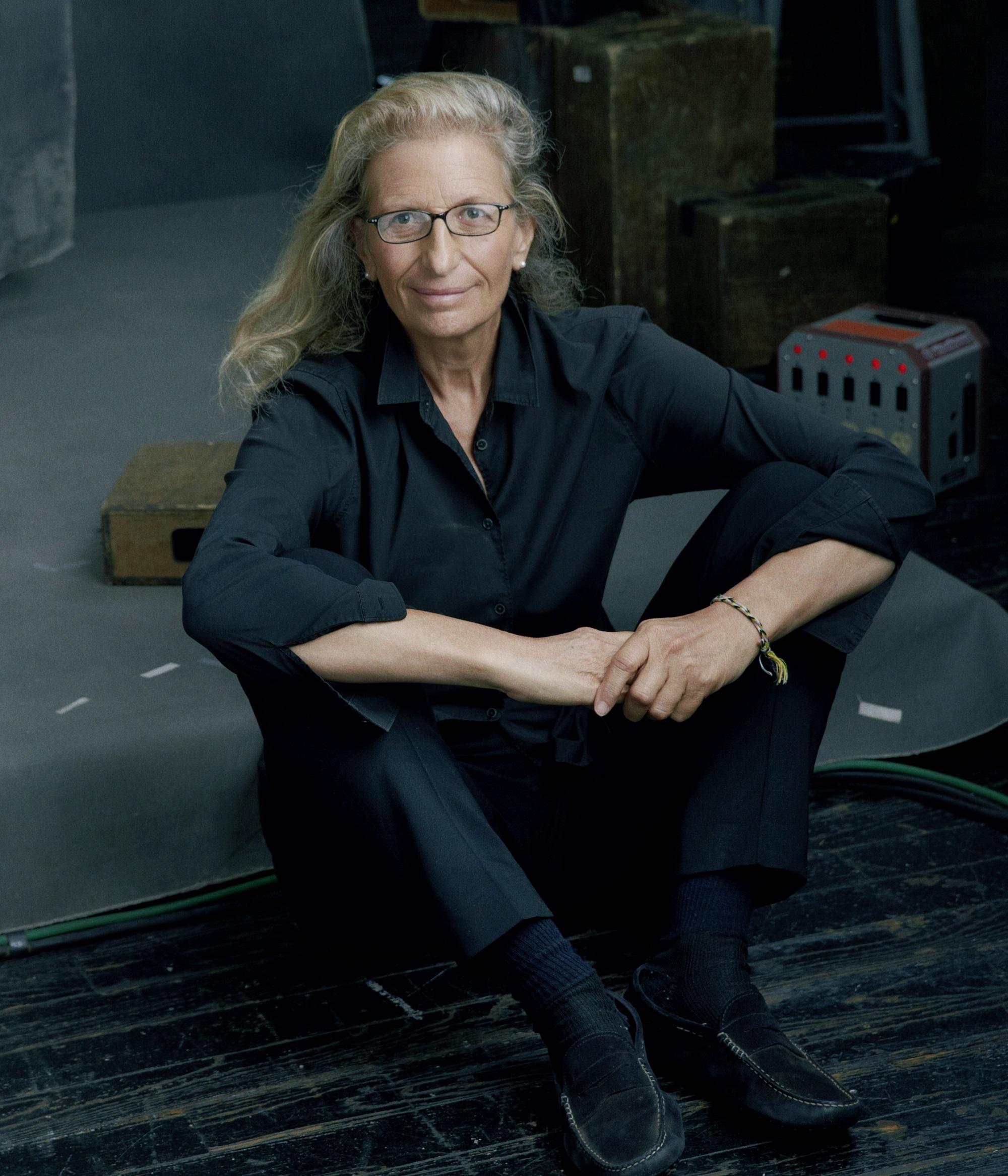
One of our favorite fashion photographers of all time took the industry by storm in 1970 when she landed a job at Rolling Stone at the tender age of 21; Annie Leibovitz, born in Connecticut in 1949, is a world renowned portrait photographer most famous for her jaw dropping editorials that have dazzled the public for decades. Prior to the start of her high-profile career, Leibovitz studied at the San Francisco Art Institute where she discovered her passion for photography. After being offered a position as a staff photographer at Rolling Stone, she was quickly promoted to chief photographer after a mere two years and held that title for the following decade. Her success at the company gave her the opportunity to document the Rolling Stones band on their international tour in 1975, solidifying her icon status only a few short years into her professional career.

The Rolling Stones by Annie Leibovitz (Pinterest)
During her time at Rolling Stone, Leibovitz slowly began developing her legendary aesthetic that features bold primary colors and mind boggling poses. Many of her magazine cover shots are considered to be collector’s items; pop culture aficionados fight everywhere to get their hands on original issue of John Lennon Wrapped around Yoko Ono, which was the final photo taken of the Beatle before his death in 1980.
After leaving her position with Rolling Stone shortly after in 1983, Leibovitz was hired by Vanity Fair where she was presented with a wider variety subjects to feature in her enchanting portraits. Her over the top shoots would feature everyone from the president of the United States to teen heartthrobs that graced the pages of TigerBeat. Though her stunning photos have captivated the attention of millions, many are also famous for their controversial compositions; a very pregnant and nude Demi Moore, Caitlyn Jenner's first photoshoot as her true self, and Whoopi Goldberg half-submerged in milk all brought Leibovitz criticism after the profiles were released.

Whoopi Goldberg by Annie Leibovitz for Vanity Fair (Vanity Fair)
This amazing artist has also shot photos for a multitude of famous marketing campaigns, including a collection of American Express portraits depicting Tom Selleck, Elmore Leonard, and Luciano Pavoritti that won her a Clio Award in 1987. As woman of many talents, she has also taken photos at the Olympics, published multiple books featuring her work with accompanying essays, and became the first woman ever to have a solo exhibition at the National Portrait Gallery in Washington, D.C. in 1991.
Residing in New York City, Leibovitz is still hard at work today and remains an iconic figure in the photography world. With such a grand portfolio, we her knew work would feature the best of the best photos depicting some fabulous fashion accessory moments. Here are our top five favorite Leibovitz fur and glove shot finds! See anyone you know?
Lady Gaga By Annie Leibovitz for Vanity Fair

Sofia Vergara by Annie Leibovitz for Vanity Fair

Uma Thurman by Annie Leibovitz for Vogue

Cameron Diaz by Annie Leibovitz for Vogue
![[0e8e7d13d384e36e62c0e871faa09a2f-703850.jpg]](//3.bp.blogspot.com/_rvYt3gZ8luM/SL-kv13yVlI/AAAAAAAAKYs/-uNDYOfRa00/s1600/0e8e7d13d384e36e62c0e871faa09a2f-703850.jpg)
Drew Barrymore by Annie Leibovitz for Vogue

If these amazing photos have you feeling inspired, head over to our collection to snag some fur and gloves of your own that would be sure to stun in any Annie Leibovitz portrait!
Sources:
Annie Leibovitz. (2016, January 08). Retrieved from https://www.biography.com/people/annie-leibovitz-9542372
-
Fur in Fashion: Faux Pas or Fabulous?
Fur in Fashion: Faux Pas or Fabulous?
By Paige McKirahan
One material that has been on trial in fashion court for decades is one that was, for a large portion of its life, associated with high status and class. Fur accessories and clothing have been in circulation for 170,000 years and were used as a status symbol in as early as the 11th century. European royalty sported fur coats, capes, and accessories commonly made from mink, sable, and chinchilla fur. This increase in fur wearing prompted the creation of laws that regulated which social classes were permitted to wear specific furs. Prior to this, furs were more so used out of utility; the real pelts offered warmth and comfort to people in primitive cultures, starkly contrasting their new popularized purpose.
As the desire for luxury furs increased over the next five centuries, so did the development of fur farms. In the Victorian era, we saw a rise in popularity with both genders as the use of furs in movies put a spotlight on the wild textile. Coats worn by men tended to be lined with fur with other materials covering the outside of the piece. Women’s coats boasted fur accents throughout at the collar, wrists, and hems. We also saw the popularity of dress and shoe clips begin to inflate in the same period; these accessories were either adorned with fur details or accessorized the fur pieces themselves.

Victorian Era Furs
(photo credits to grandladies.com)
Other accessories that loved fur fun were scarves, shawls, and hats. Looking back at their basic use surrounding warmth, people used fur to accessorize cold weather outfits in style. These small hints of luxury could elevate any look and were sure to illustrate the wearers high status.
The 1900s brought big change to the fur industry as imitation furs began to take over the market. Real furs were expensive and many fashionistas, especially animal rights activists, associated them with cruelty. As technology improved, so did the quality of fake furs created from silk and synthetic pile fabrics. Designers began to create more casual looks using fur, moving away from glamour and more towards department store chic. The ’50s and ‘60s saw fur be more affordable than ever, with faux fur options being front and center on account of Old Hollywood influence.

1950s Fur Ad
(photo credits to vintagedancer.com)
Now, fur is still one of the most widely debated fabrics in the industry and and increased amount of high profile brands are declaring themselves as fur free. The ‘90s pushed the faux v. real fur debate and used iconic supermodels as spearheads for the movement away from a fur-filled future. Fendi seems to be at the center of this debate as their haute couture counterparts seem to be ahead in the faux fur conversation; Gucci and Versace have vowed to ditch the real thing, while Fendi continues to unapologetically create pieces with real animal fur. Whatever style you prefer, we encourage you to research furs and the benefits of both styles before deciding on a side! Remember to wear what you love, and find fur items you love in our collection!
-
The Master of Bias: Charles Kleibacker
The Master of Bias: Charles Kleibacker
By Paige McKirahan
Though there have been many iconic designers in the past century that have made a substantial mark on the fashion world, Charles Kleibacker may be the most enigmatic. Born in 1921 in Alabama, this American creator earned his nickname “Master of Bias” because of his affinity for complex gown designs involving cuts diagonal to the weave. Despite his iconic status in the fashion world, Kleibacker wasn’t always so well versed in the industry; he attended the University of Notre Dame and majored in journalism, which lead him to attend New York University for his graduate studies.
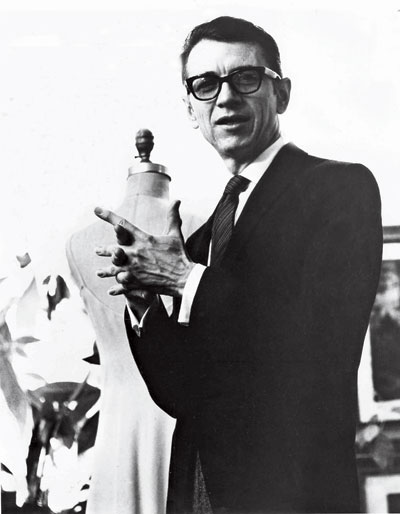
Kleibacker in 1565
(photo credits to threadmagazine.com)
He eventually relocated to California and met singer Hildegarde in San Francisco after running into one other in the same hotel. His large station wagon landed him a job as her driver and he toted around her and her entourage on tour all around the globe. It was in Europe when he finally realized his love for fashion after meeting a multitude of fashion designers through Hildegarde. His interest was piqued while in the offices of Christian Dior, and this prompted him to submit a set of early designs that earned him a spot at Lanvin in 1954. He worked there for three years and promptly returned to New York to work for Nettie Rosenstein, on the most highly regarded American fashion designers of her time.

Kleibacker for Lanvin, 1967
(photo credits to pinterest.com)
In 1959, he moved out of the shadow of others and into his own light when he began designing his own collection out of his brownstone in the Upper West Side. The line was a huge success and by the mid ‘60s, he was creating pieces for some of the most exclusive luxury clothiers including Henri Bendel and Bergdof Goodman. His trademarks were silk and wool crepe and of course, the bias cut; this special practice created designs that had a true cut look, not one that appeared stamped out.

Kleibacker designs
(photo credits to garmentozine.wordpress.com)
After his great success in New York, Kleibacker came to Ohio and became a Designer- in- Residence at The Ohio State University’s Costume and Textiles Collection. His work was a part of a 2005 exhibit there in the College of Human Ecology. He then became an adjunct curator of design at the Columbus Museum of Art and organized multiple fashion related exhibits. He remained there until the time of his death in 2010, when he passed away due pneumonia at 88 years old. Our very own CEO had the pleasure of working closely with him on multiple local fashion shows and events, making him also a close companion of our brand here at TalkingFashion. As an amazing designer so close to our home office, we felt it would only be appropriate to celebrate his wonderful life; one with a nickname like “Master of Bias” is hard to forget.
Sources:
Charles Kleibacker. (2018, October 06). Retrieved from https://en.wikipedia.org/wiki/Charles_Kleibacker





![[0e8e7d13d384e36e62c0e871faa09a2f-703850.jpg]](http://3.bp.blogspot.com/_rvYt3gZ8luM/SL-kv13yVlI/AAAAAAAAKYs/-uNDYOfRa00/s1600/0e8e7d13d384e36e62c0e871faa09a2f-703850.jpg)
